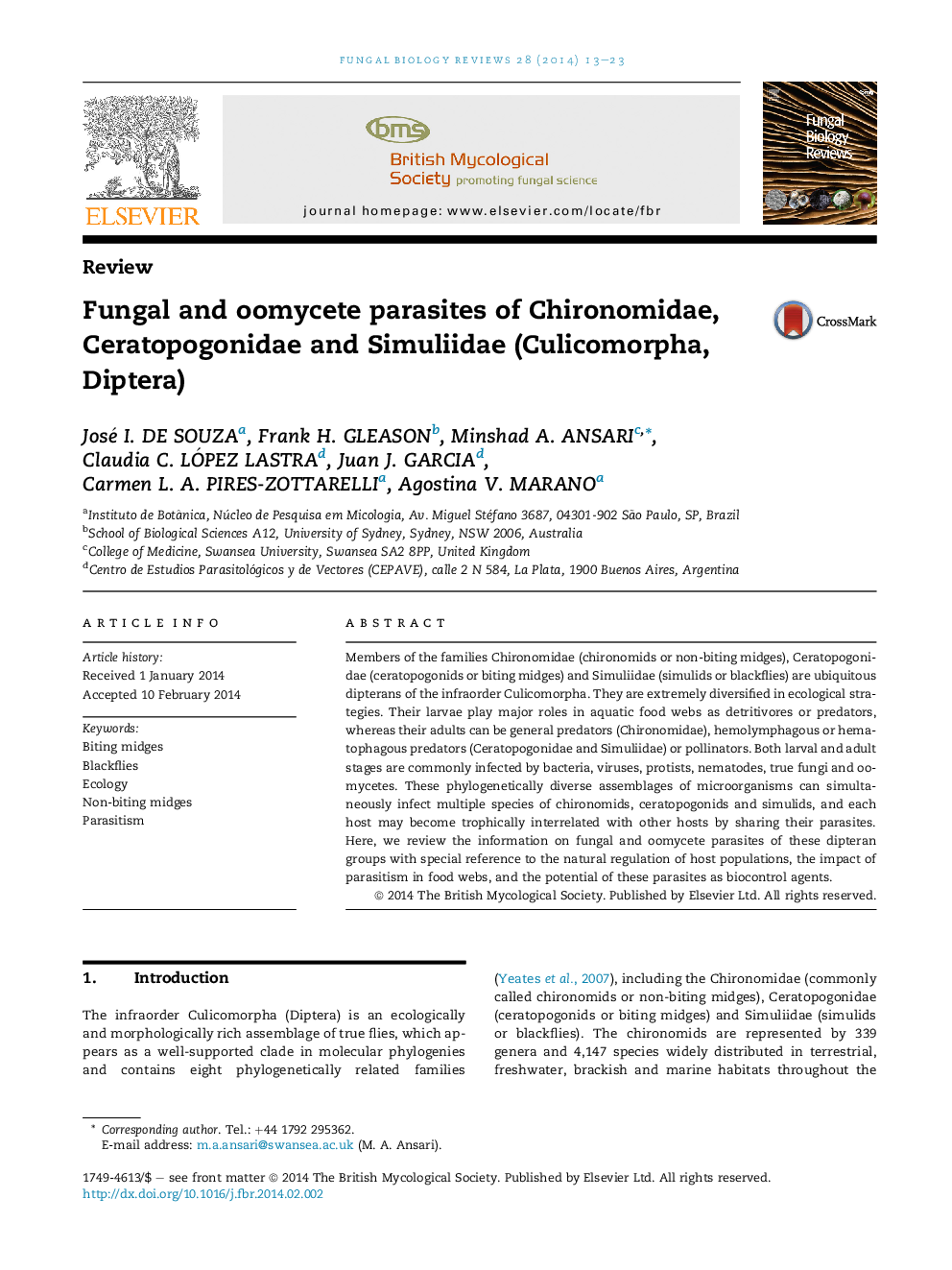| Article ID | Journal | Published Year | Pages | File Type |
|---|---|---|---|---|
| 2180477 | Fungal Biology Reviews | 2014 | 11 Pages |
•Populations of midges and blackflies can cause nuisances in urbanized regions.•They can also transmit parasites to vertebrates and are vectors of numerous viruses.•These insects are hosts for a diverse assemblage of microbes (multiple pathosystems).•Fungi and Oomycetes are the most common regulators of midge and blackfly population sizes.•The understanding of pathosystems will be of relevance for biocontrol technologies.
Members of the families Chironomidae (chironomids or non-biting midges), Ceratopogonidae (ceratopogonids or biting midges) and Simuliidae (simulids or blackflies) are ubiquitous dipterans of the infraorder Culicomorpha. They are extremely diversified in ecological strategies. Their larvae play major roles in aquatic food webs as detritivores or predators, whereas their adults can be general predators (Chironomidae), hemolymphagous or hematophagous predators (Ceratopogonidae and Simuliidae) or pollinators. Both larval and adult stages are commonly infected by bacteria, viruses, protists, nematodes, true fungi and oomycetes. These phylogenetically diverse assemblages of microorganisms can simultaneously infect multiple species of chironomids, ceratopogonids and simulids, and each host may become trophically interrelated with other hosts by sharing their parasites. Here, we review the information on fungal and oomycete parasites of these dipteran groups with special reference to the natural regulation of host populations, the impact of parasitism in food webs, and the potential of these parasites as biocontrol agents.
Graphical abstractFigure optionsDownload full-size imageDownload high-quality image (137 K)Download as PowerPoint slide
